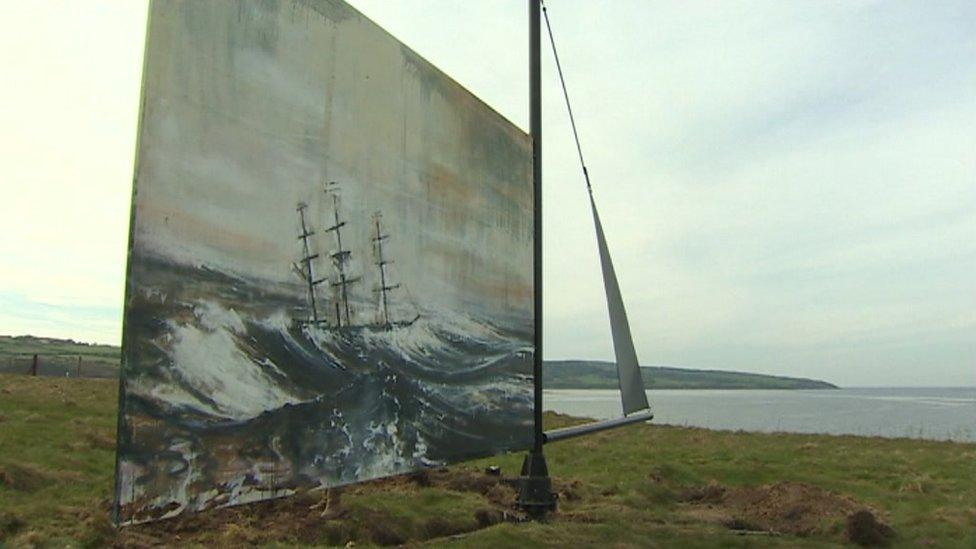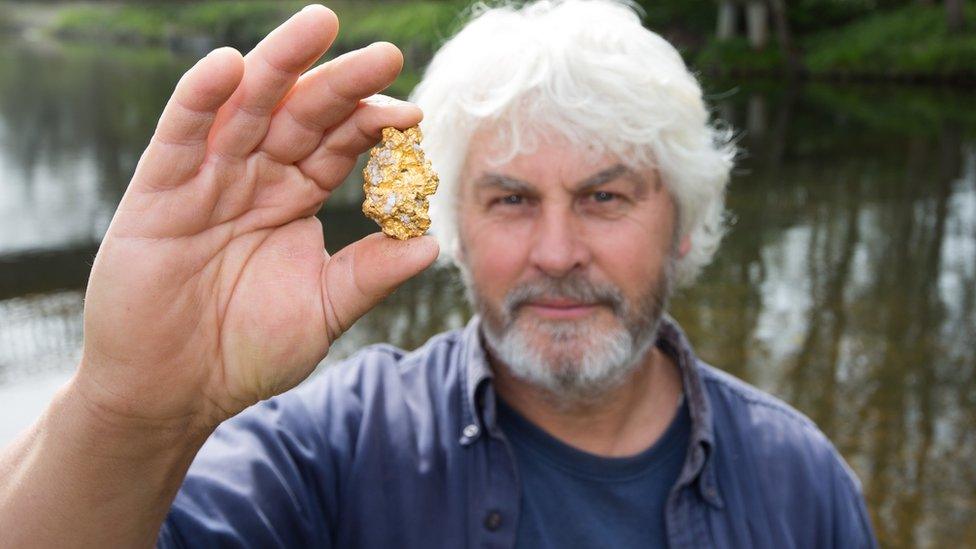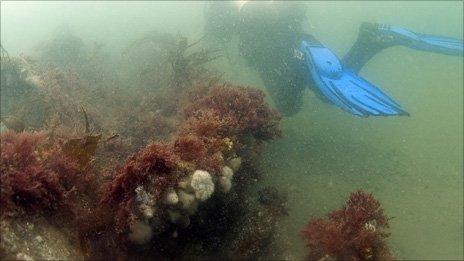Royal Charter artwork for wreck that inspired shipping forecast
- Published

Wind speed readings from the artwork will be used to compose a commemorative piece of music
The 160th anniversary of a sea tragedy that inspired the shipping forecast has been marked with a mobile work of art.
The Royal Charter ran aground on rocks on Anglesey, with the loss of more than 450 lives, in the Great Storm of 1859.
Now a double-sided painting mounted on a sail, entitled To All At Sea, has been installed near Moelfre to mark one of the UK's worst sea disasters.
Wind direction readings from the artwork will then be used to form a commemorative piece of music.
Located on the coastal path between Lligwy and Moelfre, the 12sq m vane overlooks the site where the steam clipper Royal Charter sank, external on its way from Melbourne to Liverpool.

Which painting is seen by passers-by depends on the direction of the wind
The force-12 winds in the early hours of 26 October 1859 reached more than 100mph - the strongest ever recorded at the time.
Charles Dickens reported on the disaster which led Robert FitzRoy, head of the Meteorological Office, to develop the first gale warning service a year later.
That warning would eventually become the daily shipping forecast.
The official memorial stands outside the Moelfre Seawatch Centre.
The artwork depicts both the wreck and a calm sea, to create uncertainty over which would be seen by passers-by, according to the painter.
"I wanted there to be an element of roulette which is what navigators of the time would have had to deal with before the shipping forecast," said artist Anthony Garratt.
"So the best way to have that gamble was for it to be wind-controlled."

Artist Anthony Garratt wanted to create a sense of "roulette"
Wind readings recorded by sensors within the mast of the art will then be used to write a musical composition to be performed by a male voice choir and violinist Phillipa Mo during an event to mark the anniversary of the tragedy in October.
The lyrics to the song will be written by the former Welsh national poet, Gillian Clarke.
"It has been emotional being here at the scene of the wreck. It's a very moving subject," Mr Garratt added.
"This is a great team project between engineers, weather experts, painters and poets and an opportunity to engage with this emotional story again."

The memorial to the disaster outside the Moelfre Seawatch Centre
- Published10 May 2016

- Published12 September 2011
